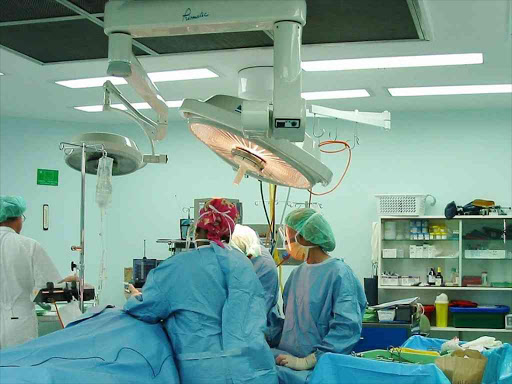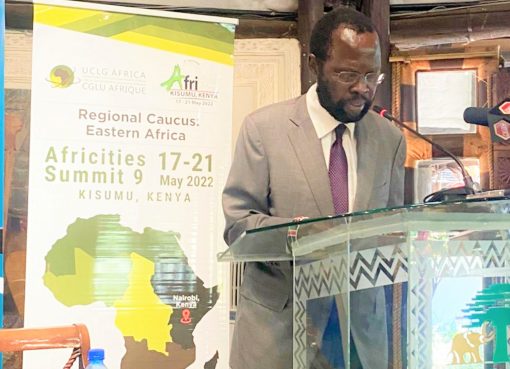Cochlear implant surgeries will for the first time be conducted at the Nakuru Teaching and Referral Hospital (NTRH) by Ear Nose and Throat (ENT) surgeons in the county, collaborating with doctors from the Baker Institute for Children with Hearing Loss, Stanford University.
The inaugural surgery (cochlear) that helps a patient with severe hearing loss or profoundly deaf get some sense of sound will be held in September this year.
According to Governor Susan Kihika, the surgeries will be performed on children under three years of age who have not developed hearing or speech (pre-lingual) and on older children who have developed hearing or speech but have lost hearing (post-lingual).
Though the initiative will particularly target needy children with hearing impairments who require surgery, the governor assured that adults are also expected to benefit.
Ms. Kihika further announced that the medical procedure, which is performed under general anaesthesia with a small incision made behind the ear to access the cochlea, will also benefit residents from the neighbouring counties of Kericho, Bomet, Narok, and Baringo.
Speaking in her boardroom when she held discussions with the President of the Baker Institute for Children with Hearing Loss at Stanford University, Ms. Jennifer Jordan McCall, the Governor noted that each year at least 3,000 children in Kenya are born deaf.
Ms. Kihika advised parents to have their babies undergo screening at birth so that they do not end up missing out on currently available interventions for them courtesy of technology.
She pointed out that children’s development of spoken language was directly related to their hearing ability, adding that most studies on hearing loss had confirmed that delayed speech and language development in children was likely to continue into adulthood.
According to the World Health Organisation (WHO), early intervention is critical to successful rehabilitation outcomes in people with hearing loss, as delays harm language development, communication, social well-being, and cognition.
Since hearing loss is invisible, it commonly remains undetected in children and adults. For this reason, extraordinary measures must be put in place to screen for hearing loss at different stages across the life course, according to the organisation.
The governor noted that the costs of cochlea implant surgeries were inhibitive in private facilities, with some amounting up to Sh3 million, adding that her administration’s initiative was geared towards benefiting families from low-income settlements.
“The surgery is quite expensive. Our intervention is geared towards ensuring that a deaf child grows and attends school normally, thereby becoming a productive member of society,” she said.
Kenya has about 153,381 people who are deaf, according to the Kenya Population and Housing Census. The report shows that there are more hearing-impaired people in rural areas (129,518), as compared to urban areas (23,843).
Ms. Kihika expressed confidence that surgeries will significantly improve the hearing and quality of life for people with severe hearing loss and enable them to continue with their normal lives after a successful operation.
Ms. McCall indicated that those most likely at risk of hearing loss include newborns and infants; children, especially in preschool and school settings; older people; and those exposed to noise, toxic chemicals, and other medicines.
Ms. McCall, also the founder of the Hear Kenya Project, explained that a lack of hearing could be congenital or acquired.
“Congenital means one is born deaf. When this happens, it could be hereditary (the result of defective genes) or acquired through intrauterine infections like syphilis and rubella during pregnancy,” she said.
She added that lack of hearing could also be acquired during life through infections like measles, chicken pox, malaria, meningitis, or even ear infections. In many cases, acquired hearing loss is preventable, she said. Congenital deafness, Ms. McCall noted, could be corrected through surgery.
“We want to improve the lives of Kenyans by giving those who can’t hear the ability to hear,” she stated.
The World Health Organisation estimates that there are 360 million people globally with disabling hearing loss. Close to 91 per cent, or 328 million, are adults, while the rest are children.
Ms. McCall warned that some subtle and unsuspecting lifestyle habits may cause deafness.
“The use of ear buds and other objects that can cause infections and trauma to the ear is dangerous,” she said. “But we also have exposure to loud noise through gadgets like earphones as well as industrial noise, especially jua kali workshop exposure without the use of ear muffs.”
Among children, immunisation against childhood diseases is touted as one of the major prevention methods against infections that lead to hearing loss.
Children born near noisy places are also likely to develop hearing problems because of the high compression inside the ear, which bursts their drums.
Ms. McCall noted that, other than noise pollution, hearing impairment can also be caused by diseases like HIV/AIDS and diabetes from the mother to an unborn child.
“There are also diseases like meningitis, malaria, mumps, whooping cough, and other infections in the ear such as otitis media (where pus comes out of the ear), which could lead to hearing loss,” she explained.
A person is said to have hearing loss if their hearing capacity is reduced and they are not able to hear as well as someone with normal hearing.
Normal hearing, according to the World Health Organisation, refers to a hearing threshold of 20dB or better in both ears. Decibel (dB) is a unit for expressing the ratio between two physical quantities, usually amounts of acoustic or electric power, or for measuring the relative loudness of sounds.
Those with a hearing threshold above 20dB may be considered “hard of hearing” or “deaf,” depending on the severity of their hearing loss.
The term “hard of hearing” is used to describe people with mild to severe hearing loss, as they cannot hear as well as those with normal hearing. The term deaf describes the condition of people with severe or profound hearing loss in both ears who can hear only very loud sounds or hear nothing at all.
WHO says more than 1.5 billion people suffer hearing loss globally. The health body categorises hearing loss as mild, moderate, moderately severe, severe, profound, or complete.
According to Ms. McCall, hearing aids consist of a microphone, amplifier, and receiver. The microphone picks up the sounds around the wearer and converts them into electrical signals, which are then processed and amplified. The electrical signals are converted back to sound, and the receiver sends the amplified sounds into the ear through the earmold.
“An audiologist will programme the hearing aids to match a child’s deafness before testing them in the child’s ear to make sure that the signal (or frequency response) coming from the hearing aid matches as closely as possible.”
Ms. McCall further explains that a cochlear implant differs from a hearing aid.
“Hearing aids amplify sounds, so damaged ears may detect them. However, cochlear implants bypass damaged portions of the ear and directly stimulate the auditory nerve.”
Signals generated by the implant are sent by way of the auditory nerve to the brain, which recognizes the signals as sound. Hearing through a cochlear implant differs from normal hearing and takes time to learn or relearn.
But it allows many people to recognise warning signals, understand other sounds in the environment, and understand speech in person or over the telephone.
By Jane Ngugi and Angela Musonye





